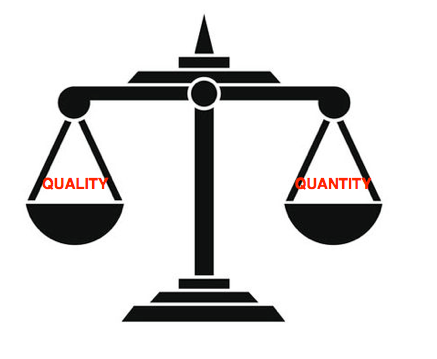If you have a research or evaluation question or issue you want to explore, how you do you know whether you need to collect qualitative or quantitative information? Your research or evaluation consultant will be able to advise you but here are some things for you to first consider.
Quantitative research
Quantitative information is generated as measurable data. It is presented in number format, for example percentages, participant numbers, sales figures, raw numbers of stakeholders, level of usage or satisfaction.The purpose of quantitative research is to provide narrow, focused and conclusive findings. It is gathered to understand the extent of something tangible, it is effective in providing a sharp and specific overview of what program activity has taken place and to what extent. It may be collected through surveys, data analysis, document review and stakeholder interviews. Quantitative research provide facts that be easily digested by readers, it helps to set benchmarks for future measures, and enables you to perhaps also understand how funding has been spent. The limitation of relying on quantitative data alone is that it only provides part of the picture and often obscures the more in-depth, more meaningful, complex and nuanced aspects of a project or program. This is where qualitative information is useful.
Qualitative research
The primary aim of qualitative research is to explore more broadly the intangible aspects of an evaluation or research topic. Qualitative research is gathered as a way to provide depth of meaning to the numbers. It is often collected through focus groups, videos in-depth interviews, case studies and open-ended questions in surveys. Qualitative information provides a rich pictures of your project or program by helping to demonstrate what difference you have made on a deeper level, on a ‘human’ scale. Of course, there are also dangers in using qualitative information alone, as it can make it difficult for the reader to understand the extent to which findings represent the broader stakeholder or community group, it can make it challenging for them to get a sense of how these anecdotes fit in the broader picture.
What to use?
Where possible, an evaluation approach should look at ways to gather both quantitative and qualitative data. Whether to start with qualitative or quantitative data depends on the research or evaluation objective. If the research is broadly exploratory in nature, it is usually best to start with qualitative research to explore the full range of views, beliefs and attitudes, then to quantify those findings with numbers. If, on the other hand, you have an evaluation brief that incorporates a number of exploratory and narrowly defined questions, it can be best to start exploring by collecting quantitative information––counting what you already know––then augmenting it with qualitative findings to add depth of meaning. For example, you may start with a finding that, say, 385 people participated in a program activity. You may then survey them all and find that, say, 80% were satisfied with what the activity. You may then wish to add some quotes or anecdotes that provide some further context or meaning behind that statistic. It may include the particular things they valued, how they used the program or service, or what they may have hoped the program should have also provided. You may then choose to use a case study that explores the full range of these issues in depth from the perspective of one user, user group, or stakeholder.
The following table summarises the differences between gathering quantitative and qualitative data.
| Qualitative | Quantitative | |
|---|---|---|
| Definition: | Whole picture | Focused |
| Research brief: | Broad | Narrow |
| Tangibility | Intangible | Tangible |
| Type of research: | Exploratory | Conclusive |
Ideally, if a budget allows it, we should use both qualitative and quantitative research, since they provide different perspectives and usually complement each other. Because there are so many different qualitative and quantitative research tools to choose from, it is usually possible to find a palette to fit your research or evaluation budget. The most important thing to keep in mind is that you will not get all the information you need from one approach alone.

